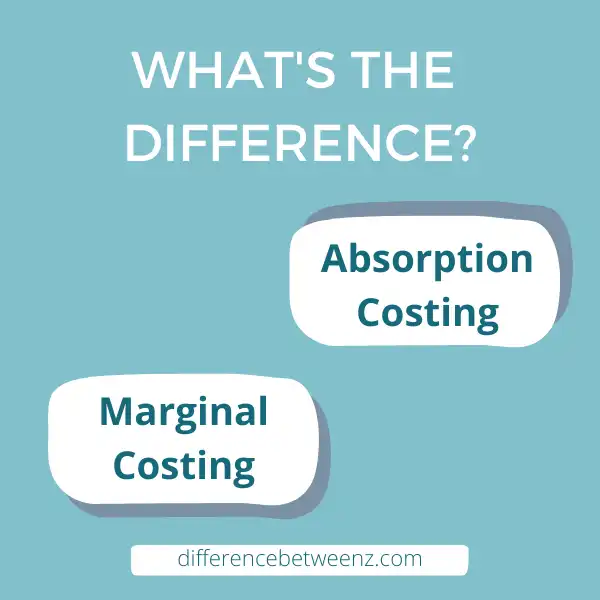Both absorption costing and marginal costing are methods of cost accounting, but they measure and attribute costs differently. In absorption costing, all manufacturing costs are absorbed into product costs, while in marginal costing only variable manufacturing costs are included. Which method is most appropriate depends on the business’ needs.
What is Absorption Costing?
Absorption costing is a method of product costing that includes all manufacturing costs, both variable and fixed, in the cost of a product. The rationale behind this approach is that all manufacturing costs are incurred in order to produce and sell a product, and therefore should be included in the cost of goods sold. This method is also sometimes referred to as full costing.
Under absorption costing, fixed manufacturing overhead costs are assigned to each unit produced, based on production volume. This means that even if a product isn’t sold, the fixed costs associated with its production will still be included in the cost of goods sold. For this reason, some businesses prefer to use variable costing, which only includes direct materials and direct labor in the product cost. However, absorption costing provides a more accurate picture of the true cost of producing a good or service.
What is Marginal Costing?
In accounting, marginal cost is the variable cost associated with producing one additional unit of a good or service. In other words, it’s the cost of the materials and labor needed to produce an additional widget. Because marginal cost is a variable cost, it will increase as more units are produced. However, at some point the law of diminishing returns will set in and the marginal cost will begin to rise more slowly.
To calculate marginal cost, accountants first need to identify all of the variable costs associated with production. These can include raw materials, labor, and energy costs. Once these costs have been tallied, they can be divided by the number of units produced to arrive at the marginal cost per unit. While marginal costing is primarily used in manufacturing settings, it can also be applied to other businesses such as transportation and agriculture. By understanding marginal costing, businesses can make better decisions about pricing and production levels.
Difference between Absorption Costing and Marginal Costing
There are two main types of costing methods used in business, absorption costing and marginal costing. Both methods have their own advantages and disadvantages, so it’s important to choose the right one for your business. Here’s a brief overview of the two methods to help you decide which one is right for you.
Absorption costing takes into account all of the costs associated with producing a product or service, including fixed costs like rent and utilities. This method is often used in large businesses where there are a lot of overhead costs. The advantage of this method is that it gives you a more accurate picture of the total cost of production. However, the downside is that it can be difficult to allocate these costs to specific products or services.
Marginal costing only includes variable costs, like materials and labor. This method is often used in small businesses where there are fewer overhead costs. The advantage of this method is that it’s simpler and easier to understand. However, the downside is that it may not give you an accurate picture of the total cost of production.
Conclusion
Absorption costing is a form of accounting that calculates the total cost of a product by adding up all the direct and indirect costs associated with producing it. This includes the cost of materials, labor, and overhead.
- Marginal costing, on the other hand, only takes into account the variable costs associated with making a product – those that change depending on how much product is produced. It does not include fixed costs like rent or salaries.
- Absorption costing is typically used in managerial accounting to help managers make decisions about pricing, production levels, and other strategic decisions. Marginal costing is more commonly used in financial accounting to calculate profits and losses for tax purposes.
The two methods produce different results because they use different assumptions about.


